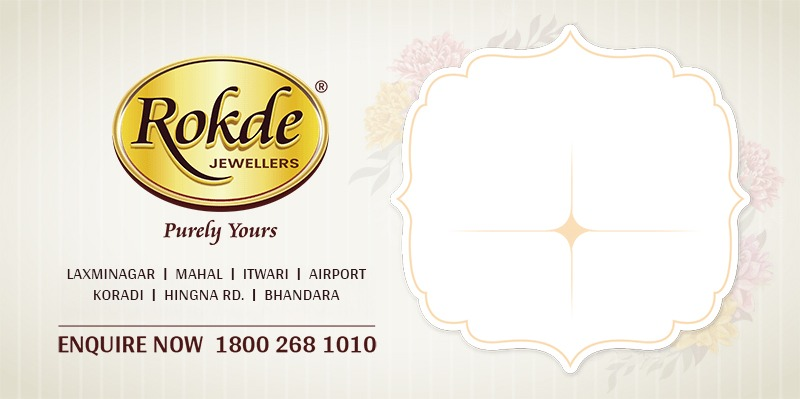
Logos have been playing inside the same sandbox for decades: circles, squares, tidy shields. Reliable, sure—but what happens when you kick the walls down and let the shape wander? Suddenly, a coffee brand becomes a looping steam spiral, a fintech turns into a tessellated honeycomb, and a nonprofit blooms into a soft-edged blob that looks like a community hug.
This is the joy of shape-bending: geometry that behaves like a living character. In this spirit of experimentation, Dreamina is your sketchbook at hyperspeed, and because first impressions matter, yes, your introduction to this adventure can even begin with an AI logo generator so you can audition wild silhouettes before you commit.
Why bend the box at all?
Because the world your brand enters is noisy and fast. Non-traditional shapes read as “fresh signal” and make brains do a tiny double-take. A spiral hints at momentum; a hexagon whispers about systems, structure, and collaboration; a blob says, “We’re friendly, flexible, and human.” More importantly, when you tweak a shape, you tweak a story. The contour becomes metaphor: edges as conviction, curves as care, facets as transparency.
The new geometry toolbox
Think of these forms as narrative ingredients you can mix, match, and season to taste. The magic isn’t in the novelty; it’s in the intention.
- Hexagons: connote networks, efficiency, nature’s engineering (bees know things!).
- Spirals: movement, growth, learning loops, time.
- Blobs (organic forms): warmth, accessibility, inclusivity, softness.
- Arcs and orbits: partnership, gravity, shared paths.
- Ribbons and knots: continuity, craft, problem-solving.
Keep two or three forms in play. Any more and your identity risks shapeshifting into a Rorschach test.
Shape as a system, not just a symbol
When a logo’s geometry is deliberate, it gives you a ready-made system for every other touchpoint:
- An icon set traced from the same curve language
- Photo frames that echo the blob’s soft edge
- Grid layouts forged from hex tessellations
- Motion paths where spirals guide transitions and reveals
It’s not just a logo on a pedestal; it’s a shape grammar that teaches every asset how to behave.
Camp Dreamina presents: “shape-shifting for the logo-curious
Ready to play? Here’s a fast, focused way to turn shape ideas into presentable concepts using Dreamina.
Step 1: Write a descriptive text prompt
Head over to Dreamina and write a lush, explicit description that tells the system about the shape language you want, how it should feel, and where it will live.
Example prompt: Create a friendly technology co-op logo named “Hive & Hinge.” Primary geometry: hexagon-shaped mark that subtly morphs into an open door. Style: organic edges that feel warm with slight ink texture. Provide a primary lockup, a one-color stencil version, and a tiny favicon. Overall vibe of: collaborative, crafted, trustworthy, optimistic.
Step 2: Change parameters and generate
Select the model tuned for brand or vector-friendly outputs. Set aspect ratios to square for your master mark and wide for your wordmark system. Choose the canvas size to match your explorations, and pick the resolution—1k for quick iterations, and 2k if you want to evaluate corner radii and texture nuance. Click Dreamina’s icon to spit out several candidates and scan for silhouettes that are legible at micro sizes.
Step 3: Edit and save
You can inpaint to nudge corners, expand to create white space around the contour, remove to clean up visual noise, and retouch to fine-tune stroke weight and texture. When the geometry is speaking clearly and the variants are in line, click the Download icon and save your set for presentation and testing.
Edges that speak brand values
Micro-decisions—corner radius, notch depth, stroke wobble—carry meaning. A 4-pixel radius feels cautious; a 24-pixel radius smiles. A subtle notch can nod to craft; a beveled corner implies tools and making. Establish a “shape voice” to guide the way you might create a tone-of-voice for copy. Your edges are your accent.
Proof of vibe: small, tactile tests
Before unveiling a new shape to the cosmos, reality-check it on everyday items—pins, patches, and little leave-behinds. Dreamina’s sticker maker is perfect here: the die-cut contour teaches you whether your shape still reads at two inches, on a water bottle, from six feet away. If the outline is recognizable without any internal details, you’re onto something sturdy.
Color and texture: making geometry breathe
A wild shape in dull color is just a weird blob. Pair contour with chroma. Spirals sing with gradients that imply motion. Hex meshes love subtle shadows and micro-embossing. Organic forms deserve paper grain, soft noise, or tactile fabric mockups. If you want to audition for treatments quickly, a quick pass through Dreamina’s AI photo generator can mock environmental textures—glassy reflections, recycled paper, brushed steel—so you can judge which surface best amplifies your geometry.
Motion: the shape learns to move
Kinetic behavior completes the character. Spirals can unspool, hexagons can assemble from smaller cells, blobs can breathe (slow in, slow out) to suggest calm. Set three motion rules—as if you were writing choreography—to keep everything coherent: duration, easing, and amplitude. Even a two-second loop can imply a world.
Common pitfalls (and how to dodge them)
Bold shapes can backfire if everything else yells, too. Keep typography calmer when the mark is expressive. Beware of “visual puns” that require squinting—if nobody sees the door in your hexagon until the fourth meeting, amplify the cue or drop it. Finally, test for ambiguity: that elegant spiral shouldn’t read as a certain seashell if you’re not a beach brand.
Micro-case sketches you can try this afternoon
- Civic arts org: Start with an arc. Multiply it into overlapping orbits that subtly sketch a stage. Result: a mark that implies audience + performer dynamics.
- Sustainable fashion co-op: Trace a soft rectangular blob, then carve a thread-like path through it that ties into a loop. The loop becomes a recurring motif for labels and tags.
- Learning platform: Build a spiral made of small dots—each dot a learner—then animate a slow inward/outward pulse to signal growth and reflection.
These are ten-minute napkin tests. If they still read after you’ve walked around the room, you’ve got a keeper.
Packaging and environments: the shape steps off the screen
The best geometry wants to be a space. Hexagons love to tessellate into display walls. Blobs make forgiving die-cuts for window vinyl. Spirals carve perfect pathways for wayfinding decals. Let your mark set the rules for how a booth wraps, how a box opens, how a label peels.
Regulation without killing the play
Write a one-page “shape constitution”—nothing heavier. Define the master contour, acceptable distortions (stretch range, rotation limits), minimum size, and motion do’s/don’ts. Give designers a small playground: three alternate outlines for seasonal use, one experimental texture per quarter. Creativity comes from constraint.
Conclusion: the delight of purposeful oddness
When logos intentionally deviate from the grid, they behave
Logos have been playing inside the same sandbox for decades: circles, squares, tidy shields. Reliable, sure—but what happens when you kick the walls down and let the shape wander? Suddenly, a coffee brand becomes a looping steam spiral, a fintech turns into a tessellated honeycomb, and a nonprofit blooms into a soft-edged blob that looks like a community hug.
This is the joy of shape-bending: geometry that behaves like a living character. In this spirit of experimentation, Dreamina is your sketchbook at hyperspeed, and because first impressions matter, yes, your introduction to this adventure can even begin with an AI logo generator so you can audition wild silhouettes before you commit.
Why bend the box at all?
Because the world your brand enters is noisy and fast. Non-traditional shapes read as “fresh signal” and make brains do a tiny double-take. A spiral hints at momentum; a hexagon whispers about systems, structure, and collaboration; a blob says, “We’re friendly, flexible, and human.” More importantly, when you tweak a shape, you tweak a story. The contour becomes metaphor: edges as conviction, curves as care, facets as transparency.
The new geometry toolbox
Think of these forms as narrative ingredients you can mix, match, and season to taste. The magic isn’t in the novelty; it’s in the intention.
- Hexagons: connote networks, efficiency, nature’s engineering (bees know things!).
- Spirals: movement, growth, learning loops, time.
- Blobs (organic forms): warmth, accessibility, inclusivity, softness.
- Arcs and orbits: partnership, gravity, shared paths.
- Ribbons and knots: continuity, craft, problem-solving.
Keep two or three forms in play. Any more and your identity risks shapeshifting into a Rorschach test.
Shape as a system, not just a symbol
When a logo’s geometry is deliberate, it gives you a ready-made system for every other touchpoint:
- An icon set traced from the same curve language
- Photo frames that echo the blob’s soft edge
- Grid layouts forged from hex tessellations
- Motion paths where spirals guide transitions and reveals
It’s not just a logo on a pedestal; it’s a shape grammar that teaches every asset how to behave.
Camp Dreamina presents: “shape-shifting for the logo-curious
Ready to play? Here’s a fast, focused way to turn shape ideas into presentable concepts using Dreamina.
Step 1: Write a descriptive text prompt
Head over to Dreamina and write a lush, explicit description that tells the system about the shape language you want, how it should feel, and where it will live.
Example prompt: Create a friendly technology co-op logo named “Hive & Hinge.” Primary geometry: hexagon-shaped mark that subtly morphs into an open door. Style: organic edges that feel warm with slight ink texture. Provide a primary lockup, a one-color stencil version, and a tiny favicon. Overall vibe of: collaborative, crafted, trustworthy, optimistic.
Step 2: Change parameters and generate
Select the model tuned for brand or vector-friendly outputs. Set aspect ratios to square for your master mark and wide for your wordmark system. Choose the canvas size to match your explorations, and pick the resolution—1k for quick iterations, and 2k if you want to evaluate corner radii and texture nuance. Click Dreamina’s icon to spit out several candidates and scan for silhouettes that are legible at micro sizes.
Step 3: Edit and save
You can inpaint to nudge corners, expand to create white space around the contour, remove to clean up visual noise, and retouch to fine-tune stroke weight and texture. When the geometry is speaking clearly and the variants are in line, click the Download icon and save your set for presentation and testing.
Edges that speak brand values
Micro-decisions—corner radius, notch depth, stroke wobble—carry meaning. A 4-pixel radius feels cautious; a 24-pixel radius smiles. A subtle notch can nod to craft; a beveled corner implies tools and making. Establish a “shape voice” to guide the way you might create a tone-of-voice for copy. Your edges are your accent.
Proof of vibe: small, tactile tests
Before unveiling a new shape to the cosmos, reality-check it on everyday items—pins, patches, and little leave-behinds. Dreamina’s sticker maker is perfect here: the die-cut contour teaches you whether your shape still reads at two inches, on a water bottle, from six feet away. If the outline is recognizable without any internal details, you’re onto something sturdy.
Color and texture: making geometry breathe
A wild shape in dull color is just a weird blob. Pair contour with chroma. Spirals sing with gradients that imply motion. Hex meshes love subtle shadows and micro-embossing. Organic forms deserve paper grain, soft noise, or tactile fabric mockups. If you want to audition for treatments quickly, a quick pass through Dreamina’s AI photo generator can mock environmental textures—glassy reflections, recycled paper, brushed steel—so you can judge which surface best amplifies your geometry.
Motion: the shape learns to move
Kinetic behavior completes the character. Spirals can unspool, hexagons can assemble from smaller cells, blobs can breathe (slow in, slow out) to suggest calm. Set three motion rules—as if you were writing choreography—to keep everything coherent: duration, easing, and amplitude. Even a two-second loop can imply a world.
Common pitfalls (and how to dodge them)
Bold shapes can backfire if everything else yells, too. Keep typography calmer when the mark is expressive. Beware of “visual puns” that require squinting—if nobody sees the door in your hexagon until the fourth meeting, amplify the cue or drop it. Finally, test for ambiguity: that elegant spiral shouldn’t read as a certain seashell if you’re not a beach brand.
Micro-case sketches you can try this afternoon
- Civic arts org: Start with an arc. Multiply it into overlapping orbits that subtly sketch a stage. Result: a mark that implies audience + performer dynamics.
- Sustainable fashion co-op: Trace a soft rectangular blob, then carve a thread-like path through it that ties into a loop. The loop becomes a recurring motif for labels and tags.
- Learning platform: Build a spiral made of small dots—each dot a learner—then animate a slow inward/outward pulse to signal growth and reflection.
These are ten-minute napkin tests. If they still read after you’ve walked around the room, you’ve got a keeper.
Packaging and environments: the shape steps off the screen
The best geometry wants to be a space. Hexagons love to tessellate into display walls. Blobs make forgiving die-cuts for window vinyl. Spirals carve perfect pathways for wayfinding decals. Let your mark set the rules for how a booth wraps, how a box opens, how a label peels.
Regulation without killing the play
Write a one-page “shape constitution”—nothing heavier. Define the master contour, acceptable distortions (stretch range, rotation limits), minimum size, and motion do’s/don’ts. Give designers a small playground: three alternate outlines for seasonal use, one experimental texture per quarter. Creativity comes from constraint.
Conclusion: the delight of purposeful oddness
When logos intentionally deviate from the grid, they behave differently in addition to changing how they look. They propose a culture that embraces experimentation and is aware of its values and flexes accordingly. Dreamina makes that exploration delightfully fast, from prompt to polished export, so you can measure twice, cut once, and still keep the spark alive. Bend your shape; don’t break your story.
differently in addition to changing how they look. They propose a culture that embraces experimentation and is aware of its values and flexes accordingly. Dreamina makes that exploration delightfully fast, from prompt to polished export, so you can measure twice, cut once, and still keep the spark alive. Bend your shape; don’t break your story.














